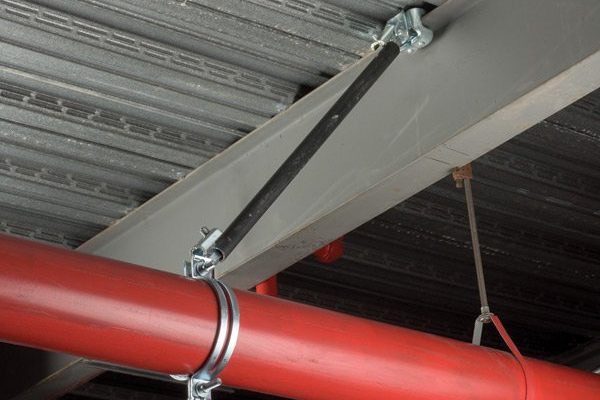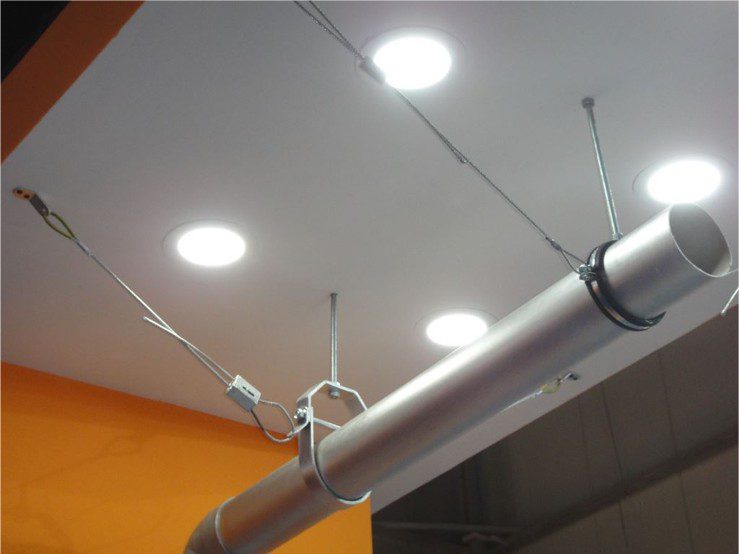Technologies for Seismically Bracing MEP Equipment
Seismic Bracing Assemblies for Conduits including HVAC Ductwork, Piping and Electrical Raceways
Conduits, including HVAC ductwork, piping, and electrical conduits and raceways, may also require seismic bracing. ASCE 7 says that:
HVAC ductwork needs bracing when the duct has a cross-section 6 ft. or larger or when it weighs more than 17 pounds per linear foot, or when it has an Ip=1.5.
Electrical raceways need bracing when they are 5” trade size or bigger. Also, all trapeze-supported raceways weighing 10 pounds per linear foot or more need braces. Electrical components with Ip>1.0 need seismic protection.
Non-sprinkler piping systems may or may not need bracing, depending on whether they are high-pressure systems or convey hazardous materials.
Any system, whether it meets these specific requirements or not, needs seismic bracing in Occupancy Category IV buildings, where the failure of a system renders the building unusable.
When ductwork, electrical conduits, and piping are hung from the ceiling (whether by rods or trapeze supports), seismic bracing is used to resist horizontal forces. The bracing protects the equipment and its hangers (often threaded rods or trapeze supports) from lateral (perpendicular to the run of the conduit) and longitudinal (parallel to the run of the conduit) shaking.
Seismic bracing in these cases consists of tension-based cable braces or rigid steel braces.

Cable seismic braces link part of the conduit system to a structural member. To resist motion in two directions, opposing cable braces are needed.

Image source : https://blog.nvent.com/caddy/caddy-benefits-of-rigid-bracing/
Rigid steel braces perform the same job as cable braces, but only one length of steel is needed. Rigid braces are, however, limited in length, and they won’t fit in certain areas and set-ups. Thus, cable braces are a far more flexible option, as they can be used just about anywhere.
Source: https://www.qrfs.com/blog/329-seismic-bracing-for-ductwork-hvac-electrical-systems/#when

